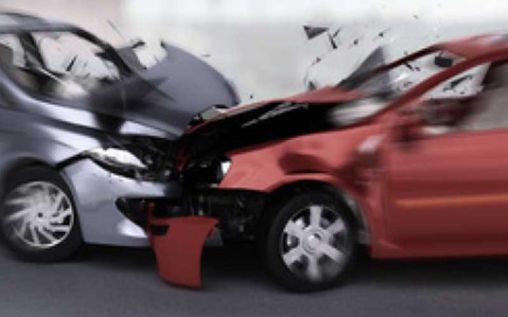How Parents can Prevent Teen Car Accidents
Posted by admin at 22 May 2019, at 10 : 57 AM

If your teenager has just got their license, it’s an exciting time. The open road awaits!
However, one of the greatest threats to teenagers right now is the car.
It’s every parent’s nightmare. Car accidents are scary, not least because they happen so often. Indeed, they’re one of the biggest causes of death among Americans.
For teenagers, the stats are even more alarming, with 6 teenagers dying per day from car accident injuries.
For everyone involved, from the teen’s family to their friends, a teen car accident is devastating. And while not every single car accident can be prevented, many can if you know a bit more about what causes them.
Let’s take a look at the top 5 reasons for teen car accidents.
Distracted Driving
There are a variety of ways a driver can be distracted. For example, they might be responding to a text on their mobile device, or even having a full-on conversation.
Or, they might be chatting with their passengers. They might even be eating, smoking or immersing themselves in a song on the radio.
While it’s never easy to cut yourself from all distractions completely (who doesn’t like talking to their friends in the car?), it’s a very good idea to do your best. Even the slightest distraction can cause a major car disaster, so it’s a good idea to be put all your focus on the road.
Especially if you’re the kind of person who struggles to complete two tasks at a time, eliminate your distractions. Put your phone away and put it on silent, and remind your friends that you need to focus on the road right now.
And eating? That can wait until you’ve pulled over (no matter how hungry you are!).
The Teens Aren’t Wearing Seat Belts
Seatbelts are there for a reason – they prevent injury. And while a car seat belt doesn’t make you immune to all injury, it can definitely save your life at times.
The scary thing is that only a tiny bit more than half of high school students admit to wearing seat belts. Yet seat belts reduce the risk of death by 45%. Moreover, seatbelt use is on the rise, but it’s still teenagers that wear them less than anyone else.
But remember that most people killed in car accidents die as a result of being unrestrained. Therefore, while you might not find a seatbelt comfortable, it’s important to belt up each time you step inside a car.
Drinking and Driving
The good news is that less and fewer teens are drinking and driving. Stats show that the amount of teens who drink and drive has dropped by 54% since 1991, which is significantly more than half. Now, just 1 in 10 teens drink and drive.
There are a few reasons for the drop. One is more parental involvement, while another was the introduction of zero tolerance laws. Yet drinking and driving still remains a problem for some teens – and their families.
Drinking and driving should really be a big no-no for everyone. Not only can you cause death to other people while devastating a whole family, as in the case of Katie Flynn, you can also cause devastation and death to your own life.
It’s also not safe the morning after you’ve been drinking through the night. It takes time for alcohol to leave the bloodstream (at least 24 hours). If you’ve had a fair few drinks the night before and know that you probably shouldn’t be taking to the wheel, it’s a really good idea not to. Even just 0.06g of alcohol in your bloodstream puts you over the limit, while drinking immediately in the morning can make it a LOT likelier that you’ll have a car accident.
Inexperience Behind The Wheel
Inexperienced drivers are likelier to have a crash than experienced drivers. This makes sense. If a teenager has two years or less driving experience, they’re not as skilled at recognizing and reacting to dangerous situations as those who have more experience.
One of the problems is that some teenagers have a tendency to hit the road without a lot of care. They’ve now got their freedom and their inhibitions have left them.
The way to combat inexperience behind the wheel is to develop sensible and good driving techniques. This means doing the right things, obeying the law and working on ironing out your mistakes as you go along.
Risk Taking
According to studies, the part of our brain that restrains our actions (basically tells us not to do something stupid) doesn’t fully develop until we’re in our mid-twenties.
For excited teens who are test driving their first car, this can be problematic – and dangerous.
Youngsters can be impulsive and they’re open to taking risks. Without the restraint part of the brain to hold them back, they can take the kind of impulse risks that lead them – and others – into trouble.
It’s important to develop a sound mind when on the road. Put rationality ahead of emotion, don’t get carried away and always do the right thing. While an impulsive risk might give you a ‘thrill’ at the time, the thrill of driving sensibly and ensuring the safety of your passengers fellow drivers should supersede it.
Conclusion
As long as you do the right thing and help your teenager to take heed of the warnings in this article, you will drastically reduce your offspring’s risk of having a car accident.
This, of course, doesn’t mean you can’t have fun behind the wheel. You totally can. Just take care, don’t get distracted – and make sure to belt up. If you are involved in an accident, you will most likely need legal advice.
